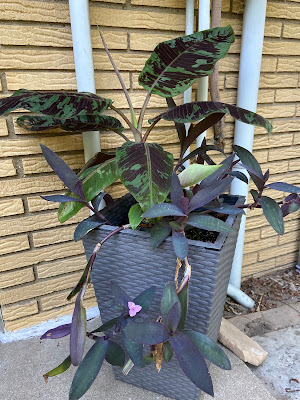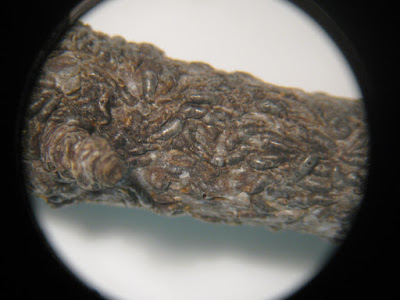Tropical plants are popular in the outdoor landscape. These include banana, elephant ear, canna, mandevilla, coleus, and more. Unfortunately, in our Midwestern landscapes, they are basically “one-timers.” They die quickly if exposed to freezing temperatures. Here are a few tips on how to save your tropical plants for use again next year.
Fortunately, there are techniques to overwinter many of these plants thus saving you time and money by having the plants on hand when you need them next spring. Instead of buying new each year, consider overwintering valuable specimens. The measures you take depend on the particular plant and its value, as well as the facilities you have to successfully overwinter them.
There are five basic choices when it comes to overwintering tropicals:
- overwinter the plant as a growing houseplant if you have proper conditions indoors,
- store it as a dormant plant, tuber, or root,
- collect seed,
- take cuttings, or
- leave it outside in a protected location providing it with suitable mulch or covering.
 |
| Variegated banana growing with Setcreasea (Purple heart plant) |
Many tropicals can be overwintered as houseplants. Large specimen palms, bananas, and ficus can be brought indoors and enjoyed so long as two requirements are met – high amounts of light and added humidity. Provide plants with the brightest location possible. Locate plants in high humidity areas if good light is available or group plants together. Grouping naturally raises the humidity in the vicinity. Expect some leaf loss when they are brought indoors from their outdoor location.
 |
| Elephant ears along my garden pond |
Many tropical plants such as elephant ear, canna and caladium form bulbs, tubers or corms. When these plants die back, these underground structures can be dug and stored in a cool, dark place through the winter. The best time to dig the bulbs and tubers is after a light frost has killed the tops back. Trim the stems down to 4-6 inches and dig the plant up. Allow the tubers to dry slightly for a day or so before storing. Place the tubers in a crate or box with ventilation holes and bury the tubers in peat moss or wood shavings. Place the box in a cool (45-50 degree), dark area. Inspect the tubers regularly through the winter checking for rotting or excessive shrinkage. If tubers are drying out, add just mist a small amount of moisture on the peat. Check out my Elephant Ears video on YouTube.
Enjoy your tropical plants indoors this winter. They’ll provide a bright, warm look to your home on a dark winter’s day.
Originally Published in Canton Ledger Column on October 10, 2011









